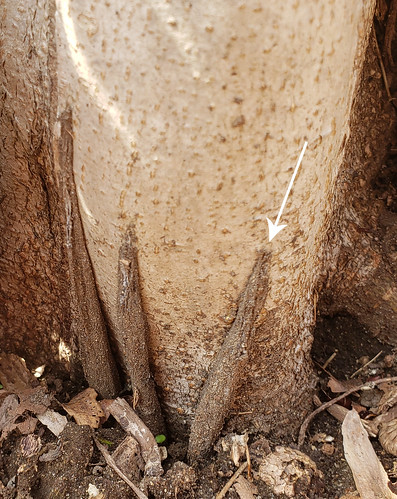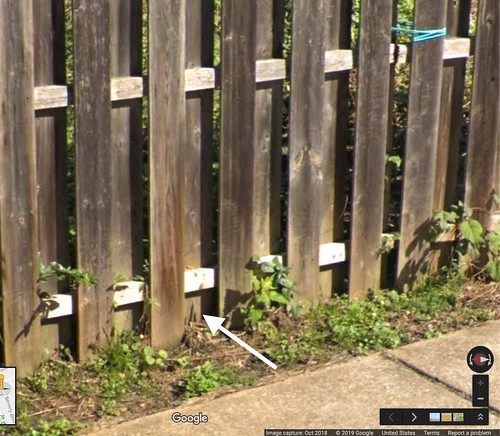Purseweb spiders (Mygalomorphae: Atypidae) live their lives inside silken socks that are partially buried in the soil and partially extending along the surface of the ground or up a tree trunk. Here is a photo of three such socks, attached to the base of tree:

When a prey item happens to crawl across the sock the spider bites through the webbing with its massive chelicerae, cuts a hole in the sock, and drags the paralyzed prey inside. Atypid chelicerae are no joke. Check out this photo by Marshal Hedin of a purseweb spider species in Japan (see also this European Atypus species):

As a hymenopterist, I’ll admit that I hadn’t given these spiders—or really any spiders—much thought. About a year ago, however, Matt Bertone mentioned during a visit to Penn State that there is only one species of Atypus in the New World, and it’s found only in greater Philadelphia. Sphodros however, the other genus in the New World, is found extensively across the eastern USA. Wild! Why Philly?! What a mystery! The story got even more interesting when I realized how the world came to know this local species of Atypus.
In 1970 a resident of Landsdowne, Pennsylvania found a bunch of unusual spiders in his pool. Specimens were sent to our resident arachnologist at the time, Bob Snetsinger, who couldn’t match them to any known species. A graduate student at Penn State, Pat Sarno, ended up doing some research on the spiders and described them as a new species: Atypus snetsingeri Sarno, 1973. Very little has been published about this species since then.
Steve Tessler, a Penn State alum (and BugGuide contributor) now runs a citizen science project aimed at helping us understand more about this cool spider. After coming across one of my New Year’s resolutions, he invited me down to Tyler Arboretum to watch the spiderlings balloon, a phenomenon that started last week and presumably continues today. Here’s a photo of Atypus gossamer I took on Saturday:

I cruised around the type locality while I was down there, and it’s clear that these spiders are abundant. You can even find their pursewebs in Google Street View:

Looks like I am slowly becoming an arachnologist! I brought back some new pets from this excursion and have been compulsively reading and re-reading everything there is about Atypidae. Maybe we’ll have more knowledge to add in the near future. Stay tuned! In the meantime here are my new beauties:


Do you know of any wasps that parasitize this species? Asking because I found a small pupal case on exterior of purse.
I don’t know of any parasites or parasitoids, but that is super interesting! Did you keep the pupal case?
Nope. But I could go back and collect it.
I collected two pupae from a purse-web and one hatched – a tachinid fly emerged.
Pupal case is on second purse from left. https://www.instagram.com/p/B2zEF-pj_mD/. I haven’t had a chance to go collect it so it might be gone.
I may have found one of these in my pool skimmer today… in Blair County.